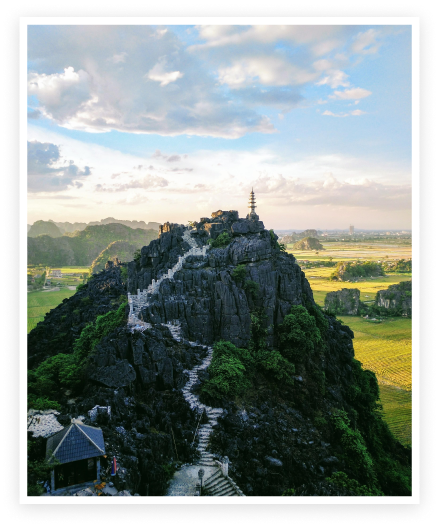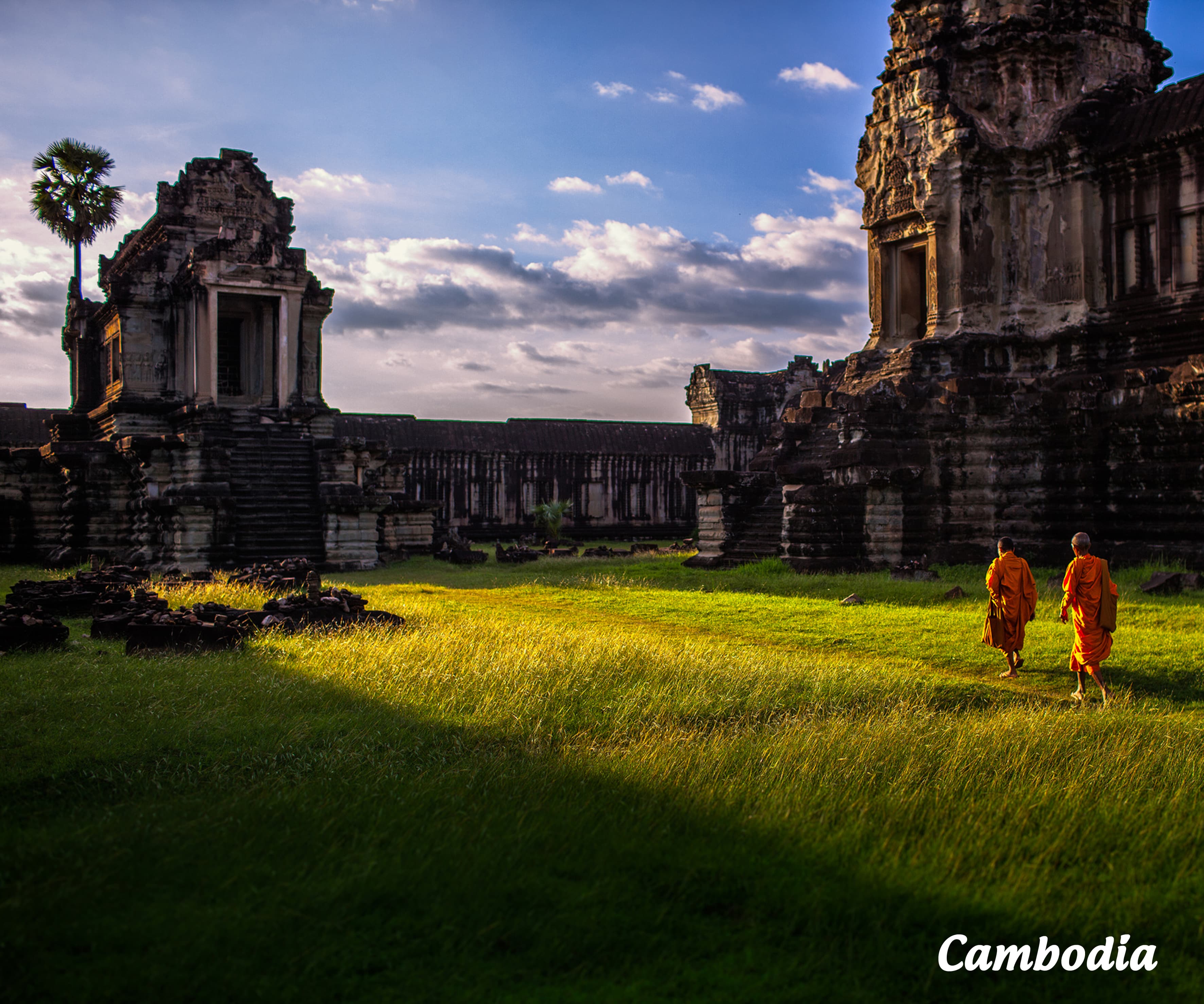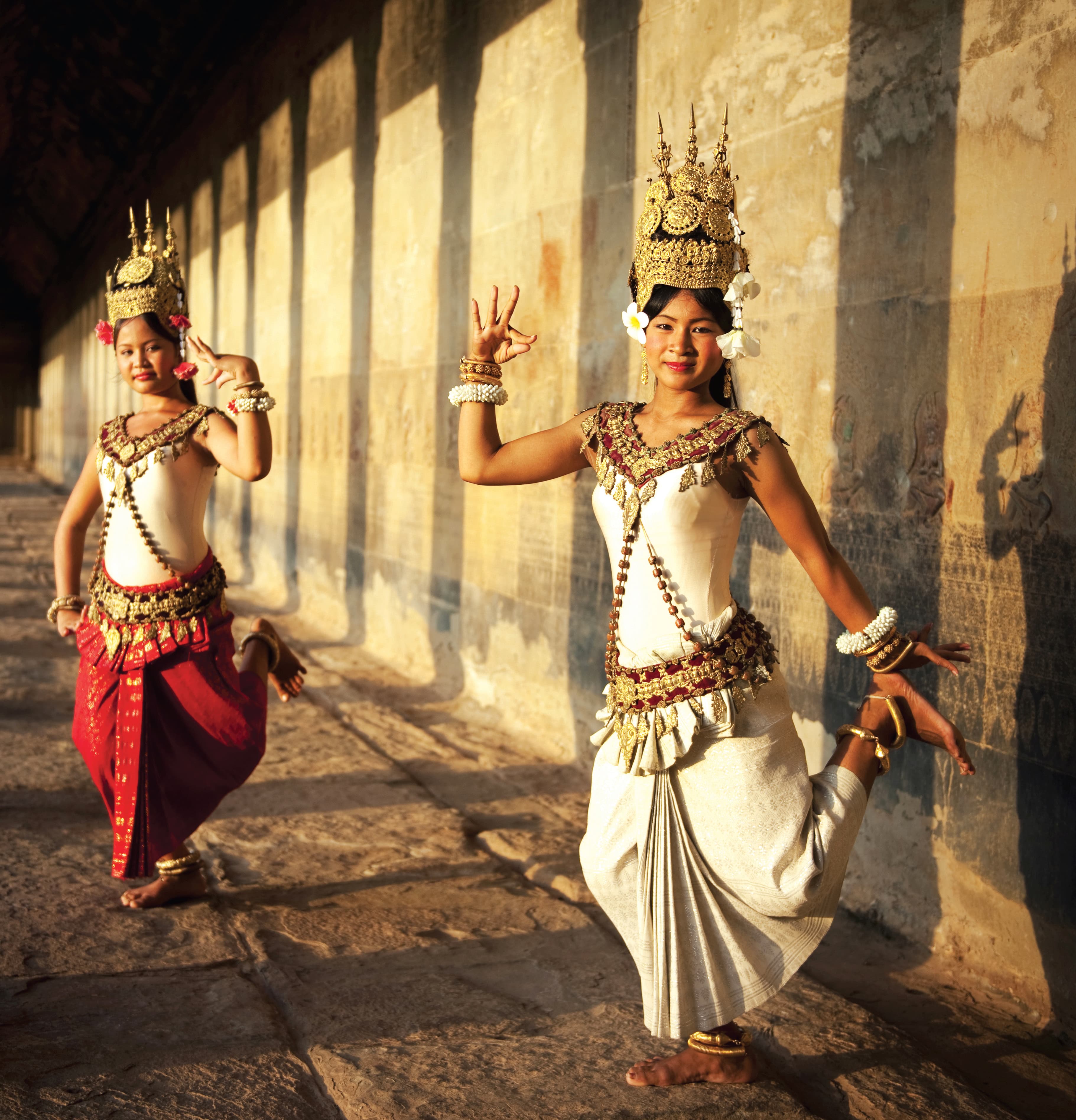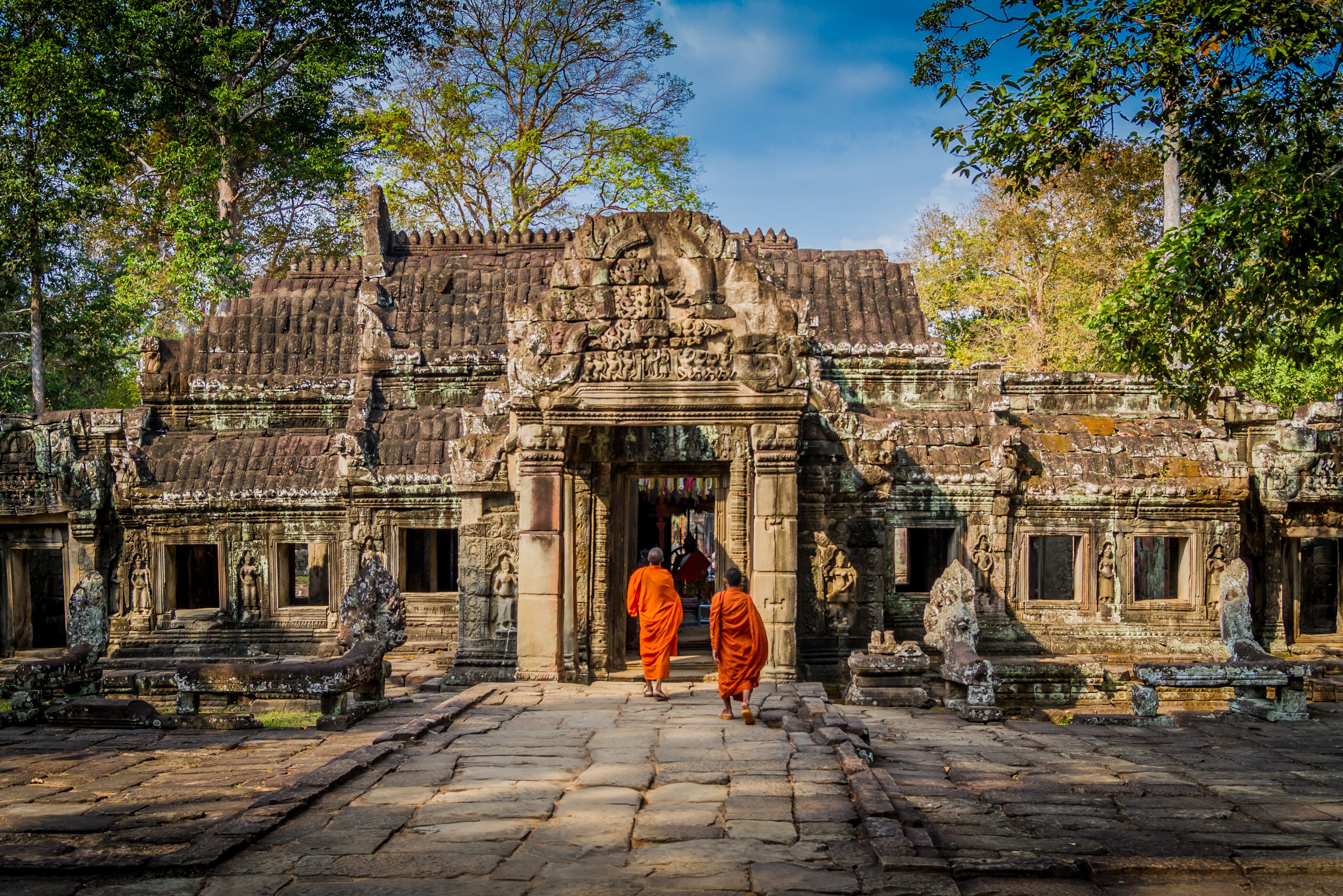“Cambodia – the Kingdom of Wonder - a charming yet confounding country witnessed many ups and downs during over 2 thousand years of civilizations. In the long history on this land, the foundation and development of the mighty Khmer Empire that used to rule much of land covering Laos, Thailand and Vietnam today was the most splendid period with many great achievements in both architecture and agriculture. Among many legacies left by this empire until today, Angkor temple complex was the most notable one, considered as the most extensive concentration of religious temples in the world.”
.png)
WHY
CAMBODIA

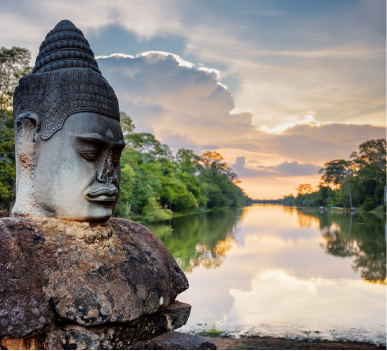
Nature
Characterized by a low-lying central plain surrounded by uplands and low mountains with many forests and national parks home to diverse array of wildlife, the biggest freshwater lake in Asia (Tonle Sap), the upper reaches of the Mekong River delta and a long coastline along the Gulf of Thailand to the southwest.
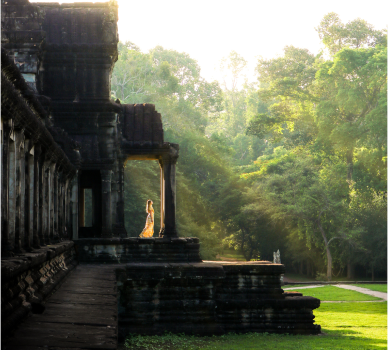
History
Once being the great Khmer Empire with its heyday from the 9th to 13th Century, witnessed the downturn from the 15th century until the first half of 19th with many wars against the neighboring countries. Felt under French colonial rule for 90 years and gained independence in 1953, though experienced the darkest time of civil war from 1975-1979 also known as the Khmer Rouge which devastated the country severely.
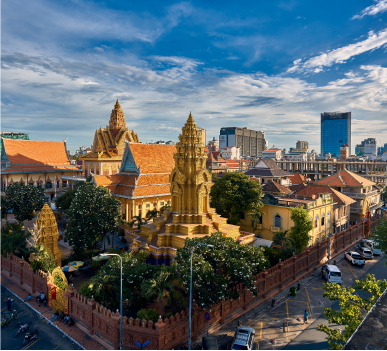
Culture
Largely homogeneous in population with the majority is Khmer people (90%), some minor groups including Vietnamese, Chams, Chinese, and Khmer-Loeu or Montagnards. Majority of the population (95%) practice Theravada Buddhism which is deeply influenced by Hinduism and native animism. People tend to live in harmony, avoid aggression and conflict.
.png)
Architecture
Angkorian architecture or religious architecture produced by Khmers during Angkor Empires which were influenced by Hinduism that featured in most of the Angkor temples. Traditional architecture can be seen in rural Cambodia typically by house-on-stilts while French colonial architecture legacies remain in Phnom Penh, Kep, Battambang, Kampot.
.png)
Food
The country's cuisine reflects the comparable crops prevalent in the greater region. That implies that most meals include rice, frequently in the shape of noodles. In the recipe itself or as a side dish, fresh veggies are utilized. Along with soups and dipping sauces, expect to find herbs and spices. Foods can be grilled, fried, or stewed. Red meat consumption is low; instead, you're more likely to find chicken, pork, and fish in your meals.
.png)
REGION
1
JAN
2
FEB
3
MAR
4
APR
5
MAY
6
JUN
7
JUL
8
AUG
9
SEP
10
OCT
11
NOV
12
DEC
siem reap /
phnom penh












BEACHES












CAPITAL:
Phnom PenhLANGUAGE:
Khmer language as the country's sole official language.French is spoken among many old people. English is widely used specially among youth in big cities.
POPULATION:
16.68
million(Mar, 2020)
AREA:
181.035
km2(69.898 m2)
CURRENCY:
The Riel.USD is accepted everywhere like local currency (Riel)
ATM is popular in the city center. Money withdrawal rate at ATMs costs an average of 3.3%.
ATM is popular in the city center. Money withdrawal rate at ATMs costs an average of 3.3%.
COORDINATES:
11° 59' 16.68'' N; 104° 58' 50.21'' EELECTRICITY:
Between220-230
Volt50 Hz
TIME ZONE:
GMT+7
HoursRELIGION:
Largely homogeneous in population with majority is Khmer people (90%), some minor groups including Vietnamese, Chams, Chinese, and Khmer-Loeu or Montagnards.Majority of the population (95%) practice Theravada Buddhism which is deeply influenced by Hinduism and native animism. People tend to live in harmony and avoid aggression and conflict.
CURRENCY:
Vietnamese Dong VND($1 = 23.500 VND – April 2023)
Visa for Cambodia
You may, however, obtain a 30-day visa upon arrival and renew it while still inside the nation. You may seek a visa in advance through an embassy or consulate, and there is now an e-visa option that is appropriate if you want to remain for a long time.
Best time to visit Cambodia
Cambodia is warm year-round. Dry season, running November through May, encompasses two seasons: cool (November-February) and hot (March-May). Cool season is when most travellers visit Cambodia. Wet season runs May through September and is a good time to visit Angkor.
Dress code
Dress modestly, covering your shoulders and knees, when visiting religious places, the countryside, and the Ho Chi Minh Mausoleum. Before visiting a temple or pagoda, don't forget to take off your hat and shoes. Don't wear shorts, miniskirts, or bare shoulders. You should never turn your back on a Buddha statue or image.
Emergency contact
Ask the aid of a Khmer speaker because there might not be an English-speaking operator on the line:
Ambulance: 119
Fire department: 118
Police: 117 or 118
Safety in Cambodia
In Cambodia, there hasn't been much of a concern with physical safety, according to reports. Be on the lookout for pickpockets and always keep any expensive electronics and documents in a safe location because pickpockets may operate in well-known tourist spots.
Health advices
- Avoid raw meat and fish
- Prefer boiled or cooked vegetables instead of raw vegetables.
- Wash your hands frequently
- Drink a lot of water to keep your body hydrated, and avoid strong physical exercise before you get used to the heat.
- Use insect repellent several times a day if you are in a humid region of Cambodia, and at night time in the whole country. Wear long sleeved/legged clothes to avoid mosquito bites, mostly at night time also.
Do and don’t in Cambodia
Always respect local traditions out of consideration for the people who gladly welcome visitors. There are a few things to keep in mind while you explore this stunning nation:
Do
- Always get someone's permission before taking their picture, especially in remote areas.
- To combat mosquitoes, have insect repellent on hand. No vaccines are required, however it is advisable for anyone considering a trip to Cambodia to think about getting some and packing some medication because it may not be available everywhere.
- Remove your shoes before visiting temples, pagodas, and other places of worship.
- In such places, bare skin is discouraged; stay away from shorts, cover your shoulders, and take off your cap.
- When entering someone's home, take off your shoes. If you are asked to come to a meal, bring a small present; flowers or fruit are acceptable.
- If you're going to a wedding in Cambodia, provide a monetary gift.
- As you offer and receive, use both hands.
- If you are being introduced to someone, bow slightly forward while clasping your hands together (as if in prayer). Use common sense; it is generally formal and not always anticipated.
Don’t
- Use your feet to indicate, as they are thought to be the dirtiest part of the body.
- Don't touch anyone's head; it's the most significant and private area of the body.
- Under no circumstances should you begin eating before your host.
- If you're a woman, touch monks or give them something.
- Show excessive affection in front of others.
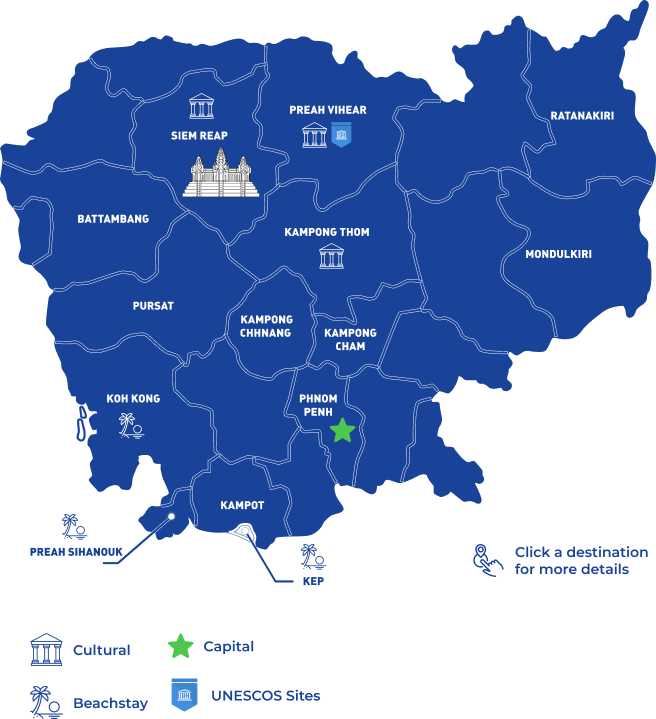
.png)
PHNOM PENH
Featured by well-organized streets, charming old houses alongside new deluxe buildings, busy river ports, exciting night markets and various cuisines, Phnom Penh is a typical growing Asian capital. Owning the biggest international airport of the country and connecting with Vietnam by short landway and riverway, Phnom Penh welcomes not only tourists coming for holiday but the businessmen from Vietnam, all over Asia, and beyond. In comparison with other towns in Cambodia, Phnom Penh resembles the fascination and growth of the country utmost. On the other hand, the city will relieve you with its deep cultural value and inspiring architectural works.
.png)
Culture site: Royal Palace complex with Silver Pagoda; The Independence Monument; The Statue of King Father Norodom Sihanouk
.png)
National Museum – the largest and the central museum of the country, Tuol Sleng Genocide Museum; Choeung Ek Genocidal centre (Killing Fields)
.png)
Wat Phnom – located on the top of the city’s hill, Koh Dach (Silk Island); Tonle Bati; A sunset boat tour on the Mekong river.
.png)
Others: Mekong Island cycling tour, Beer Tasting Experience, foodie tour,
TRENDING NOW
RECOMMENDED TOUR
Contact Us
Drop A Message
